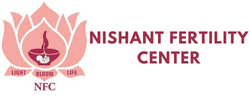Third-Party Reproduction - Egg Donation Process
Everything About Egg Donation Process
All potential donors and recipients must undergo a thorough screening process to ensure that they are good candidates for the procedure. Once a donor and recipient couple have been accepted and matched, the egg donation process can begin.
Cycle Synchronization
The first step in the egg donation process at NFC is to synchronize the menstrual cycles of both donor and recipient. This is to ensure that the fertilized embryo created from the egg of the donor can be promptly transferred to the uterus of the recipient. The coordination of the menstrual cycles is accomplished through the use of carefully administered medications. The donor is given fertility medications to stimulate the maturation of several eggs at once, while the recipient’s natural cycle is suppressed and replacement hormones are used to prepare her uterine lining to receive the embryo.
Egg Retrieval And Fertilization
Once the donor’s eggs are ready, an egg retrieval procedure is performed using an ultrasound-guided transvaginal aspiration. A needle passed through the vaginal wall and into the ovary, and gentle suction is used to collect the mature eggs from their follicles. The procedure takes about ten to fifteen minutes, and with intravenous sedation, there is little or no discomfort. Recovery is brief, and the patient can return to normal activities the following day.
Once the eggs are collected, the donor has completed her participation in the egg donation program. The eggs will be fertilized with the sperm of the recipient’s partner. This may be accomplished through standard In Vitro fertilization by combining the eggs with prepared sperm and allowing fertilization to take place on its own, or through intra cytoplasmic sperm injection (ICSI), if indicated.
Embryo Placement
When the eggs have been fertilized and have reached the necessary stage of embryonic development, two to four healthy embryos will be selected and transferred into the uterus of the recipient. Any remaining embryos can be preserved (frozen) for later use, in case the first cycle is unsuccessful. Because transferring more than two to four embryos does not increase the chances of success, but does increase the likelihood of a multiple pregnancy, we do not transfer more than this number in any given cycle.
The embryo placement procedure for an egg donation cycle is the same as that performed for a standard IVF cycle. A small catheter is threaded through the opening in the cervix and into the uterus. An even thinner, soft catheter containing the embryos is placed through the first catheter, and the embryos are deposited into the uterus with the use of an ultrasound to visualize the placement. The procedure takes very little time and involves very little discomfort. The patient rests for 30 minutes after the procedure. She is subsequently discharged and is advised to continue resting for the next day or two while hatching and implantation take place.
Get in touch
(Kindly Take Appointment For Consultation To Avoid Inconvenience.)
Call Us
E-mail Us
OPD Timings
Mon-Sat : 9:30 am – 2:30 pm & 4:30 pm - 6:30 pm
Sunday Off
Reach Us
1, Jacob Road, Near Civil Lines Railway Crossing, Civil Lines, Jaipur, Rajasthan 302006, (India)
